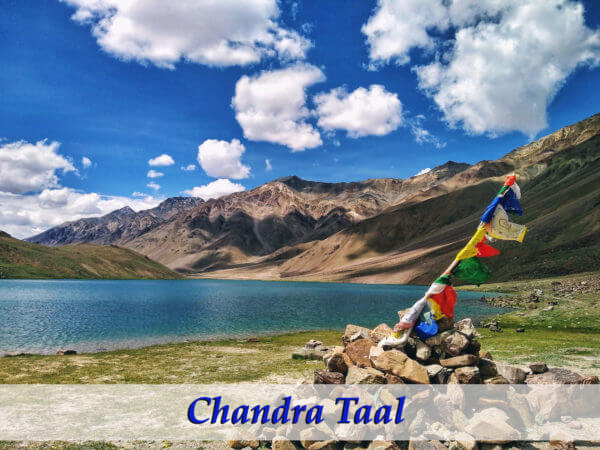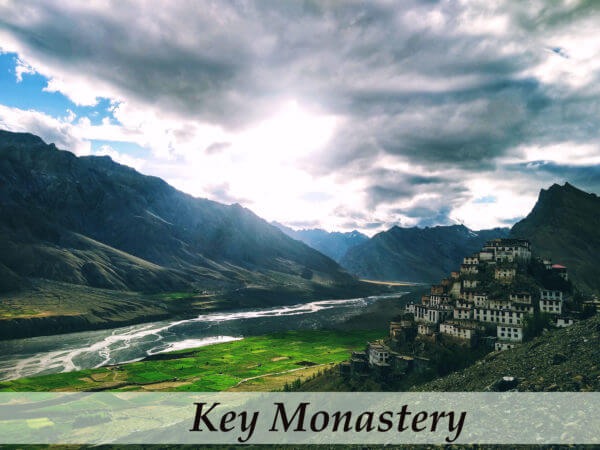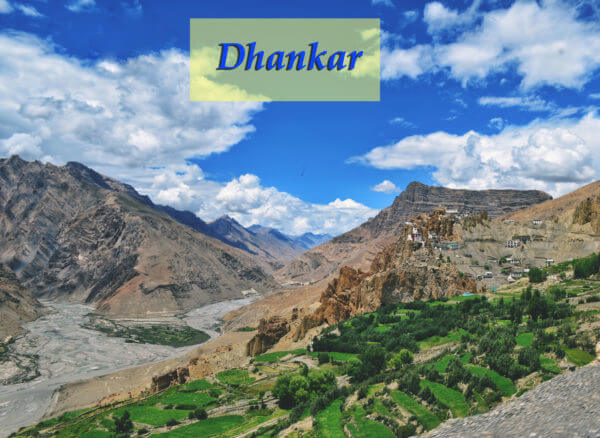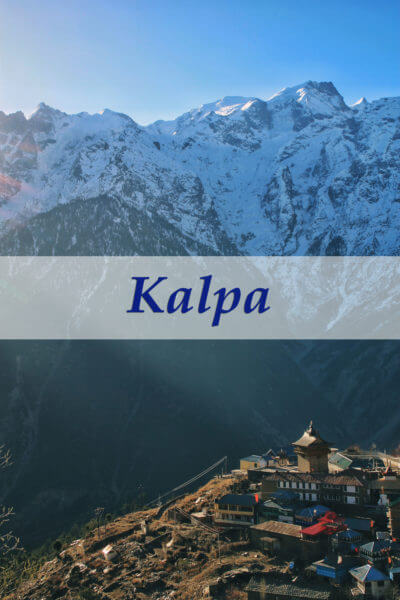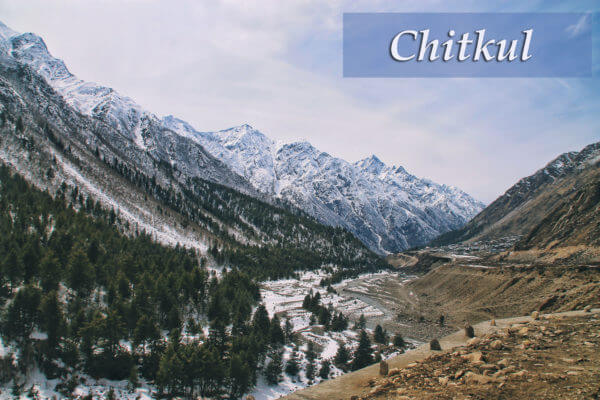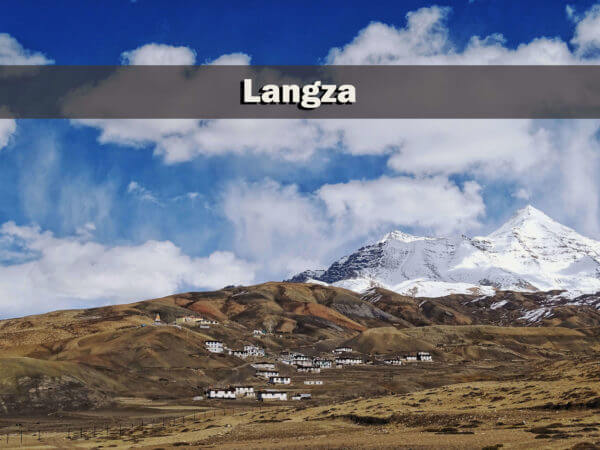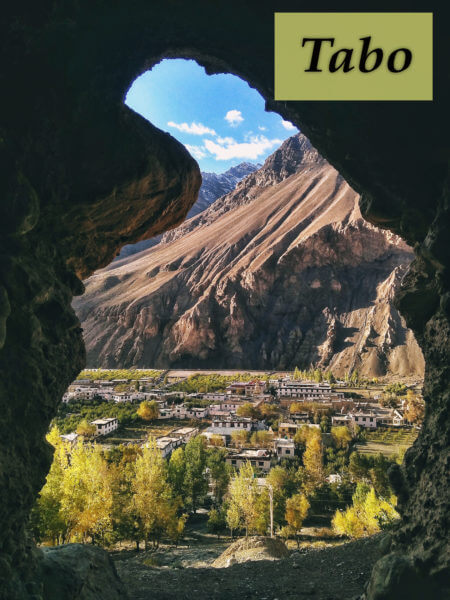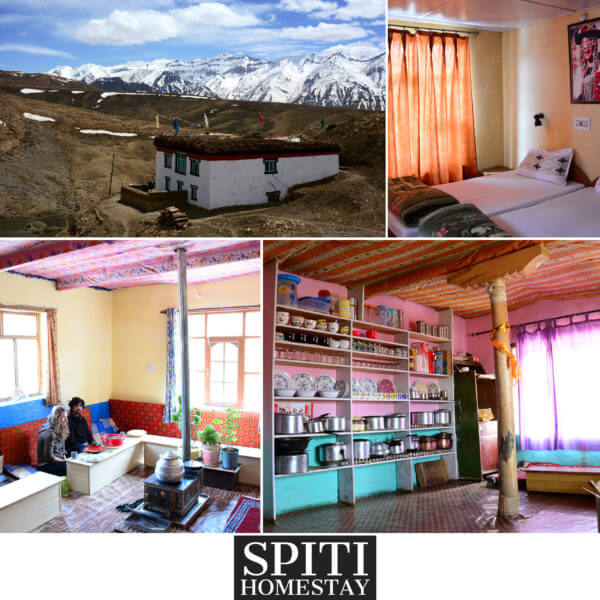Spiti Valley Tour
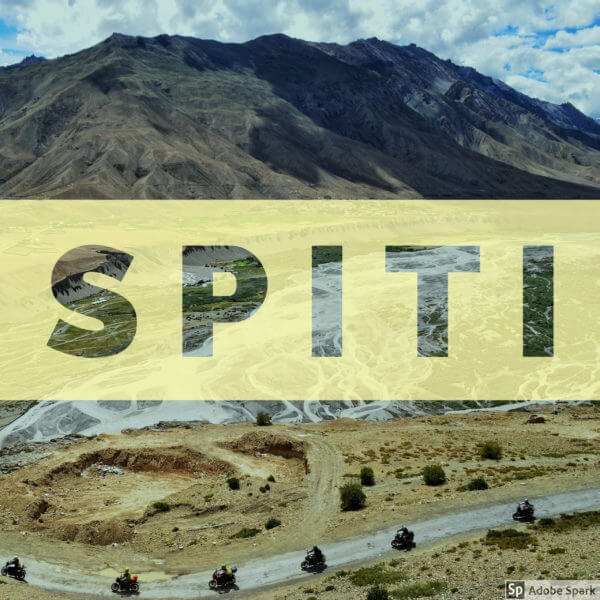
Spiti valley is a dream destination especially for those who fancy visiting a challenging yet enticing terrain in India. The overwhelming yet soulful ecosystem drapes you in a way that you’d never want to go back home.
Lahaul and Spiti
Lahaul and Spiti are two different valleys. Lahaul is hazier, covered with green landscapes, deep blue lakes, golden snow peaks and the most remote villages of India. Spiti is known more for its cold deserts, snow capped barren mountains and monasteries. Spiti valley is home to some of the ancient monasteries like Tabo, Sherkhang and Dhankar in addition to motorable villages- Langza and Komic perched highest in Asia. It crowns itself with the highest post office in the world – Hikkim.
The valley is home to a distinctive Tibetan Buddhist culture similar to that found in Tibet and the Ladakh region in India. Both places hold high in their majestic and breathtaking views. Kunzum La – which rises to 15000 feet, divides Lahaul and Spiti regions. While Spiti gets crowded during the peak tourism season, Lahaul remains untouched and isolated reflecting an ancient civilization.
Best time to visit Spiti valley
The journey to Lahaul and Spiti is open for tourism only for about 5 months (late May – late September) and remains inaccessible due to heavy snowfall for the rest of the months. Only during these 5 months, the weather is warm enough (15-20 degrees) for you to make your way to wondrous terrain’s captivating views.
People and culture of Spiti
The people of the terrain can be best described through Rudyard Kipling’s words, “Surely the Gods must live here, and this is no place for men”. In spite of being one of the coldest places of India, it is home to the people with warmest hearts.
Places to see in Spiti
Chandra Taal
About 6 km from the mighty Kunzum Pass and placed at a height of 4270 m, lies the hidden heaven, the crescent shaped ‘Chandrataal Lake’. The ecstatic lake is almost 2.5 km in length. The lake overlooks Chandra River(Chenaab) since it is situated on the plateau of Samudra Tapu. It’s tedious/challenging effort to reach Chandratal but every step is completely worth the rewarding sight of sparkling panoramic paradise and the crystal blue water. You can either reach by foot from either Batal or Kunzum Pass, or opt for the motorable road that takes a little longer route but goes almost till the base of the lake. Popularly known as Spiti’s trekker’s paradise, is an ideal place for those who seek adventure in life. The camping sites in the green meadows adjacent to Chandra taal are a true feast for the eyes. The color of the sparkling, clear water of lake keeps changing throughout the day. Best time to visit the lake is between noon and 4 pm when its color is aquamarine blue. The color of water of this holy lake keeps changing, from reddish to orange to blue to emerald green as the day ends. The walk around the lake is a simple walk of 1-2 hours. It’s a photographer’s paradise.
According to a popular belief among the inhabitants of Spiti, the Chandra Taal lies near the place from which the eldest brother among the Pandavas, Yuddhishtra was picked by Lord Indra in the Mahabharta. This fact renders the lake sacred and thus engages a crowd of Hindu devotees.
Key Monastery
The key monastery also spelled as Kye monastery or Ki Monastery is a famous Tibetian Buddhist monastery in Spiti district. Also known as Kye Gompa, this monastery is the primary monastery and a mesmerizing landmark of Kaza region. It is very close to Spiti River and is located at an altitude of 4166 m above sea level. Key Monastery is the largest and oldest monastery in Spiti. It is over thousand years old. Tourists come here to get a look towards the valley from the entrance arch which is said to be the most beautiful view in Spiti.
Kye Gompa is said to have been founded by Dromton, a student of the great Bengali master Atisha in the 11th century. Developed due to the Chinese influence,the monastery’s walls are covered with murals and paintings giving you the example of monastic architecture of 14th century. Kye monastery has a magnificent Buddha Shrine. There are three floors, the first one is mainly underground and used for storage. It has a huge collection of books and murals including Buddha images. One room, called the Tangyur is richly painted with murals. You can watch the incredible dance of Lamas accompanied with horns and pipes therein. Also the Gompas receive their religious training here. The ground floor has the beautifully decorated Assembly Hall and cells for many monks. The monastery of Kye accommodates around 250 monks during winters and then’s when they receive their education and training from here. The best time to visit Key monastery is morning when the prayer session and morning chanting by the young and old monks in their red garments, creates a spell binding ambience.
The notable history of Kye Monastery starts from 14th century when it was attacked and then destroyed when the Sakya sect rose to power with Mongol assistance. Then again in the 17th century, the monastery was attacked by the Mongols and became a Gelugpa establishment, during the reign of the Fifth Dalai Lama. In 1830, it suffered huge damages due to the wars between Ladakh and Kulu. In 1841, the monastery was attacked by Ghulam Khan and Rahim Khan who were leading the Dogra army. Later that same year, it suffered more damage from a Sikh army. In the 1840s, it was wrecked by fire. Furthermore, in 1975, a severe earthquake shook the monastery, leaving behind it mass damage. This damage was then repaired with the help of the Archaeological Survey of India and the State Public Works Department. Through all the attacks and natural disasters, the monastery still survived and celebrated the completion of its thousand years in year 2000 in the presence of the present Dalai Lama.
Dhankar
Away from city noises and perched at a height of 4270 m lies a fabulous natural Dhankar Lake, also called the Sar Kund Lake. It is at a distance of 5 km from Dhankar Monastery, nestled on a cliff. It takes about an hour to reach lake from the Dhankar monastery. The lake offers a mesmerizing view of the spell binding reflection of color changing sky on the lake. The trek to Dhankar lake is a challenging one. However, the view which welcomes your eyes upon reaching, is worth all the effort. It is undeniably one of the best places to visit in Spiti.
Kalpa
Kalpa is one of the few other places of Spiti which is less known but no less in its beauty. It’s a small town located in Kinnaur district situated at an altitude of 2759 m from sea level on the old Hindustan Tibet Road .It is located at a distance of about 220 km from Shimla. To reach Kalpa,you have to climb uphill till Narkanda driving yourself to the banks of Satluj /river and continuing towards Reckong Peo while crossing Rampur, Jeori and Powari and approximately 16 km on a steep narrow road welcomes you to the majestic view of Kalpa’s peaks. Kalpa is a small heritage village and can be covered all in less than an hour.
Kalpa valley is known for its apple orchards. The locals go in sync with Hinduism and Buddhism. The first ever voter of India Shyam Saran Negi belongs to Kalpa. Kalpa was earlier the district Headquarter of Kinnaur. It came into notability when British Governor General Lord Dalhousie visited in the 19th century. Kalpa is known to be the winter home of Shiva. The sun touching the snowy peaks in the morning with crimson gold light shines to give you a wondrous view.
Chitkul
Chitkul is a village of Kinnaur district and is the last Indian village on the old Hindustan Tibet route near Indo-China border. It’s the last point in India, one can travel without a permit. One has to cross 5242 m high Charang Pass to reach Chitkul loacted at a height of 3450 m, located around at a distance of 28 km from Sangla, around 40 km from Karcham where road bifurcates from Hindustan- Tibet Road(NH 22) and is about 600 km away from Delhi. The trek to Nagasthi ITBP is about 4 km and Rankanda meadows is about 10 km from Chitkul. Apricot and apple trees bloom in the month of April. It is like a doorway to little paradise where you find orchards, mountains, rocks ,river, grassland and meadows. According to a recent study by Centre of Atmospheric Sciences at IIT Delhi, Chitkul has the cleanest air in India.the serenity of this place is a sight to behold.
This little village is a must-visit place, and one should stay for at least a day here as the landscape keeps you magnetized all the time. It is a perfect place to spend some time off from the busy lives and the monotonous routines in the realm of natural beauty.
While in chitkul, don’t forget to carry adequate cash or fuel for your car as there’s no ATM or fuel stations here. There is also neither a clinic nor any hospital so one has to travel back to Sangla in case of emergencies. Three is no mobile connectivity in this area. There’s a dhaba which is the last dhaba of India with a sign board that says Hindustan ka akhri dhaba. Do visit the dhaba for a picture and food.
Travelers interested in street photography will love to stroll in streets. While walking around the village you will surely bump into friendly locals who will greet you with big smiles and try making small talks by asking you small general questions.
Chitkul produces one of the best variety potatoes in the entire country nearly all of which are used in producing packed chips. There are two schools in Chitkul. Primary School id located within village and secondary on banks of Baspa river.
Kaza
Situated at an elevation of 3650 m(11,980 feet) Kaza or Kaze is the largest township and commercial center of Spiti Valley. Kaza is positioned along Spiti River in the western Himalayas in Lahaul and Spiti district and is the sub-divisional headquarters of Spiti valley.Kaza and Spiti have cultural and geographical similarities with Tibet and Ladakh. Kaza is situated at a distance of 11 km from Ki or Key Monastery. Kaza is accessible from two sides: Manali ans Shimla.
One route Via Shimla-Rekong Peo-Kinnaur-Spiti-Kaza is accessible throughout the year. Shimla-Kaza route is the longer one, about 425 km but the roads are broader and passes mostly through civilization. While the Manali-Kaza route crossing 13,090 foot(3990 m) high Rohtang Pass reaching Gramphoo joining the road from Keylong and following Chandra river till Batal climbing up to reach Kunzum La Pass placed at about 4550 m (14,928 foot) then entering Spiti valley to finally reach Kaza, is about 200 km and takes almost 12-14 hours to reach the destination. The entire stretch has never been tarred. Due to the lack of proper roads in this section, it is advisable to hire a taxi from Manali to Kaza.
Kaza is divided in two sections: Kaza Soma and Kaza Khas. Kaza Soma is the new town and Kaza Khas is the old town where you can see king’s palace, monasteries, and historical buildings. Kaza is known for its colorful festivals and the Sakya Tangyud Monastery.
Langza
Also known as “The Switzerland Of Spiti” perched at a height of 4330 m, Langza village is a majestic destination. The awe-strucking landscapes of Langza leaves you speechless and makes you feel like you are on heaven while breathing. Its history takes you 500 million years back when this place was submerged under Tethys Sea and you can catch a glimpse of the prehistoric era in Langza till date. It is located about 14 km away from Kaza. This picturesque village is dominated by its main attraction which is the 1000 year old and colorful Buddha statue in the meadows, overlooking the valley, the mud houses and an ancient monastery.
The amazing part is that Langza is one of the few places on Earth where you can find sea animals and plants Fossils that were found here millions years ago which is why many geologists and historians visit the village every year for their research of fossils. You can go for fossil hunting down the slope before the Statue of Buddha and enjoy collecting some ancient marine Fossil for your sweet home. You can also visit Chadua(Fossil) center to know more about Fossils. You can also Trek for about 3-4 hours with a local guide or villager to see lakes around Langza as well. Your drive towards Rangrik from Kaza puts you to a road on right that goes to Langza-Komic-Hikkim. Langza Village is segregated in two villages : Langza Gongma(upper village) and Langza Yongma(Lower village) and is home to a total population of about 150 people spread among 33 odd houses.The locals are extremely hospitable who work very hard through the summer months growing the years food and herding their sheep in high altitude meadows.
The production of all sizes and shapes of vessels and crafts as shawls or carpets are common to be sold in Langza. Please note that the toilets are mostly limited to the dry pits. The sky in Langza offers one of the best view of Milky way anywhere on Earth and thus attracts a lot of Archaeologists too. During the winter months of December and January, few endangered species such as Tibetian wolf, snow leapords, Himalayan griffon can be spotted around the village of Langza owing to being located at high altitude. One can easily see yaks and sheep roaming with shephards or in herds at any time of the year.
Tabo
Tabo Monastery known as the ‘Ajanta Of The Himalayas’ is placed on a barren and rocky desert of Tabo valley at a height of 3050 m (10,010 ft) above sea level and 48 km southeast of Kaza. Tabo town lies on the road between Rekong Peo and Kaza, the sub divisional headquarters of Spiti. Unlike other monasteries which are placed on the hills, Tabo valley is bowl type flat valley and Tabo monastery is also situated in the bottom of the valley. Above the monastery are a number of carved caves used by Gompas or monks for meditation.
The Tabo Chos-Khor Monastery was founded in 996 A.D. and is famous for its exquisite statues in stuccos, frescos, and murals depicting tales from the Mahayana Buddhist Pantheon which are spectacularly striking.The complex of Monastery includes 9 temples, a monk’s chamber ,23 chortens(cave shrines). The monastery was rebuilt after the earthquake of 1975. Assembly Hall which was built later showcases a four-fold figure of Vairocana, one of the five spiritual sons of Adibuddha, wall paintings depicting life of Buddha etc. As a National Historic Treasure of India, the monastery is protected by Archaeological Survey of India(ASI). Because of its spiritually rich serenity, The Dalai Lama considered this monastery the holiest and expressed his desire to retire to Tabo. Tabo Monasteries spiritual head is Tsenshap Serkong Rinpoche. Temperature in Tabo can range from -15 °C (5 °F) in the day to -45 °C (-49 °F) overnight. In summers, temperature ranges from -5 °C (23 °F) at night to 20 °C (68 °F) celsius in daytime. Mobile phone networks don’t work well in Tabo in Spiti Valley, except BSNL network.
How to reach Spiti Valley
Manali-Spiti Route
Taxi Service from Delhi to Manali
Time to cover Manali – Spiti : About a week to cover all major landmarks.
The drive from Delhi -Spiti is a long one and you would have to stop at Manali or Shimla to rejuvenate for the rest tour. The Manali – Spiti route doesn’t open until late May. From Manali, you have to cross rohtang pass and Rani Nala.
The nearest airport to Lahaul-Spiti is Bhuntar airport in Kullu. Tourists can reach Spiti by hiring a taxi.
Shimla – Spiti Route
The other route is from Shimla via Kunzum La Pass to Reckong Peo to Nako to Tabo via Kinnaur. This tour takes you to the last village of India on the Tibetian Side, the highest village in the world with motorable road , the highest post office in the world, most difficult road to build in the world.
A Moroccan explorer Ibn Battuta said that travelling leaves you speechless; then turns you into a storyteller. The tour to Lahaul-Spiti will surely be the most adventurous story you will have.
“When you leave a beautiful place, you carry it with you wherever you go”. Alexandra Stoddard
Spiti Itineraries
Manali – Spiti valley – Chandigarh
Day 1: Manali to Chandra tal lake. Overnight at chandra tal.
Day 2: Chandratal to kaza via kunzum pass, kibber, gette village, tashigong village & key gompa. Overnight at kaza.
Day 3: Kaza to hikkim, koumik, langza buddha statue & mudh village. Overnight at dhankar.
Day 4: Dhankar (sunrise) to nako. Enroute, visit tabo & Gue. Overnight at nako.
Day 5: Nako (sunrise) to sangla via kalpa. Overnight at sangla.
Day 6: Sangla-Chitkul-Sangla. Overnight at sangla.
Day 7: Sangla to shimla via Narkanda/matiana/Fagu. Overnight at shimla.
Day 8: Local shimla sightseeing. Overnight at shimla.
Day 9: Shimla to chandigarh. End of tour.
Note: The above Itinerary will be described in detail on confirmation of tour.
Write to us at Contact page for further details
Manali – Chandratal lake – Kaza
Day 1: Manali to chandra tal. Overnight at chandra tal
Day 2: Chandral to kaza. Overnight at kaza.
Day 3: Kaza to Dhankar. Enroute visit sites of interest. Overnight at Dhankar.
Day 4: Day trip to tabo including visiting other sites. Overnight at Kaza.
Day 5: Kaza to Manali. End of tour.
Note: The above Itinerary will be described in detail on confirmation of tour.
Write to us at Contact page for further details
Leh – Spiti valley – Manali
Day 1: Leh to Keylong. Overnight at keylong.
Day 2: Keylong to Chandra tal lake. Overnight at Chandra tal lake.
Day 3: Chandra tal lake to Kaza. Overnight at kaza.
Day 4: Kaza excursions including tabo. Overnight at kaza
Day 5: Kaza to Manali. Overnight at Manali.
Day 6: Manali local sightseeing. Overnight at Manali. End of tour.
Day 7: Manali to Delhi/Chandigharh.
Note: The above Itinerary will be described in detail on confirmation of tour.
Write to us at Contact page for further details
Leh – Spiti valley – chandigarh
Day 1: Leh to Keylong. Overnight at keylong.
Day 2: Keylong to Chandra tal lake. Overnight at Chandra tal lake.
Day 3: Chandra tal lake to Kaza. Overnight at kaza.
Day 4: Kaza excursions including tabo. Overnight at kaza
Day 5: Kaza to Sangla. Overnight at sangla.
Day 6: Sangla to shimla. Overnight at shimla.
Day 7: Local shimla sightseeing. Overnight at shimla. End of tour.
Day 8: Shimla to Delhi/Chandigarh.
Note: The above Itinerary will be described in detail on confirmation of tour.
Write to us at Contact page for further details
Shimla – Sangla – Manali
Day 2: Local shimla sightseeing. Overnight at shimla.
Day 3: Shimla to Sangla. Overnight at sangla.
Day 4: Sangla-chitkul-sangla. Overnight at sangla.
Day 5: Sangla to tabo via nako. Overnight at tabo.
Day 6: Tabo to dhankar via gyu. Enroute visiting many other sites. Overnight at dhankar.
Day 7: Dhankar to Chandra tal and enroute visiting many other sites. Overnight at Chandra tal lake.
Day 8: Chandratal lake to manali.
Day 9: Local manali sightseeing. End of tour.
Note: The above Itinerary will be described in detail on confirmation of tour
Write to us at Contact page for further details
Spiti Homestays
Homestays in spiti valley are growing in popularity every year. Most of the stays are at remote locations, at times in-hospitable conditions & opened only for about 6 months in a year. In such conditions, instead of hotels, tourists & travellers make best use of homes that have opened their doors for visiting guests. This trend has caught on and become an important part of spiti travel itinerary.
We have wonderful homestays to provide for your comfortable stay. The warmth, hospitality & exotic nature is undeniably unique and once in a lifetime experience. Mail or call us for further details.



